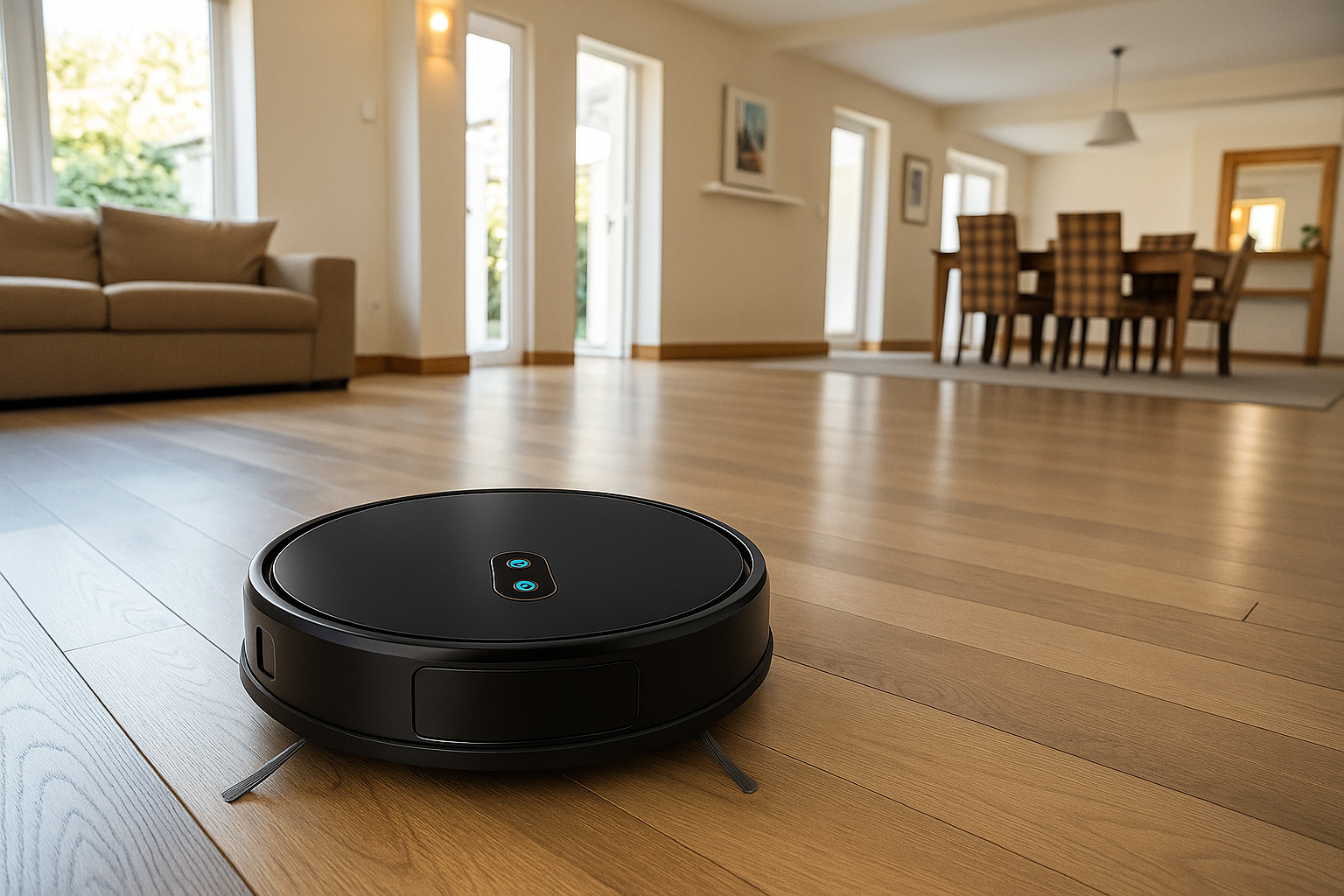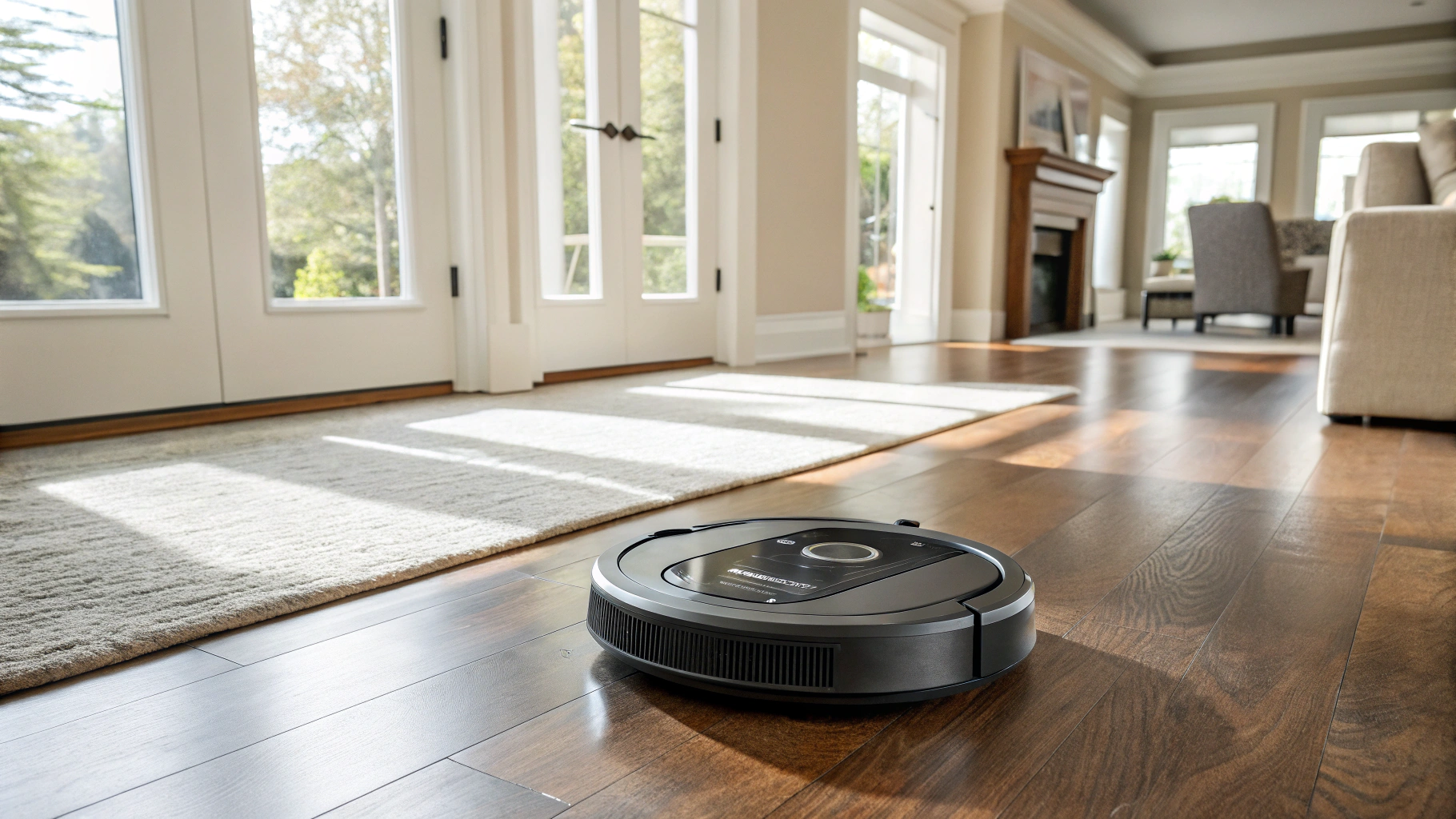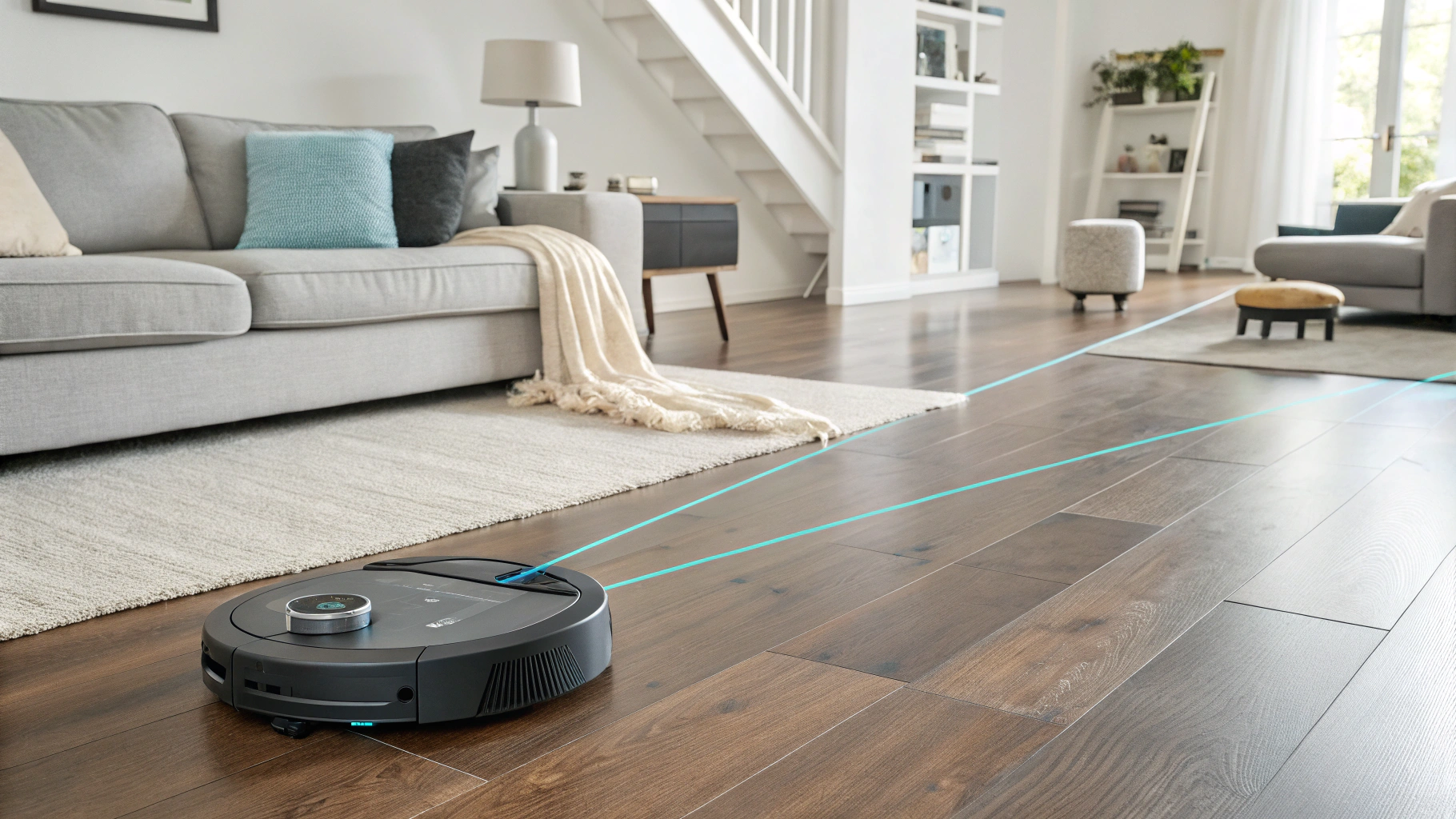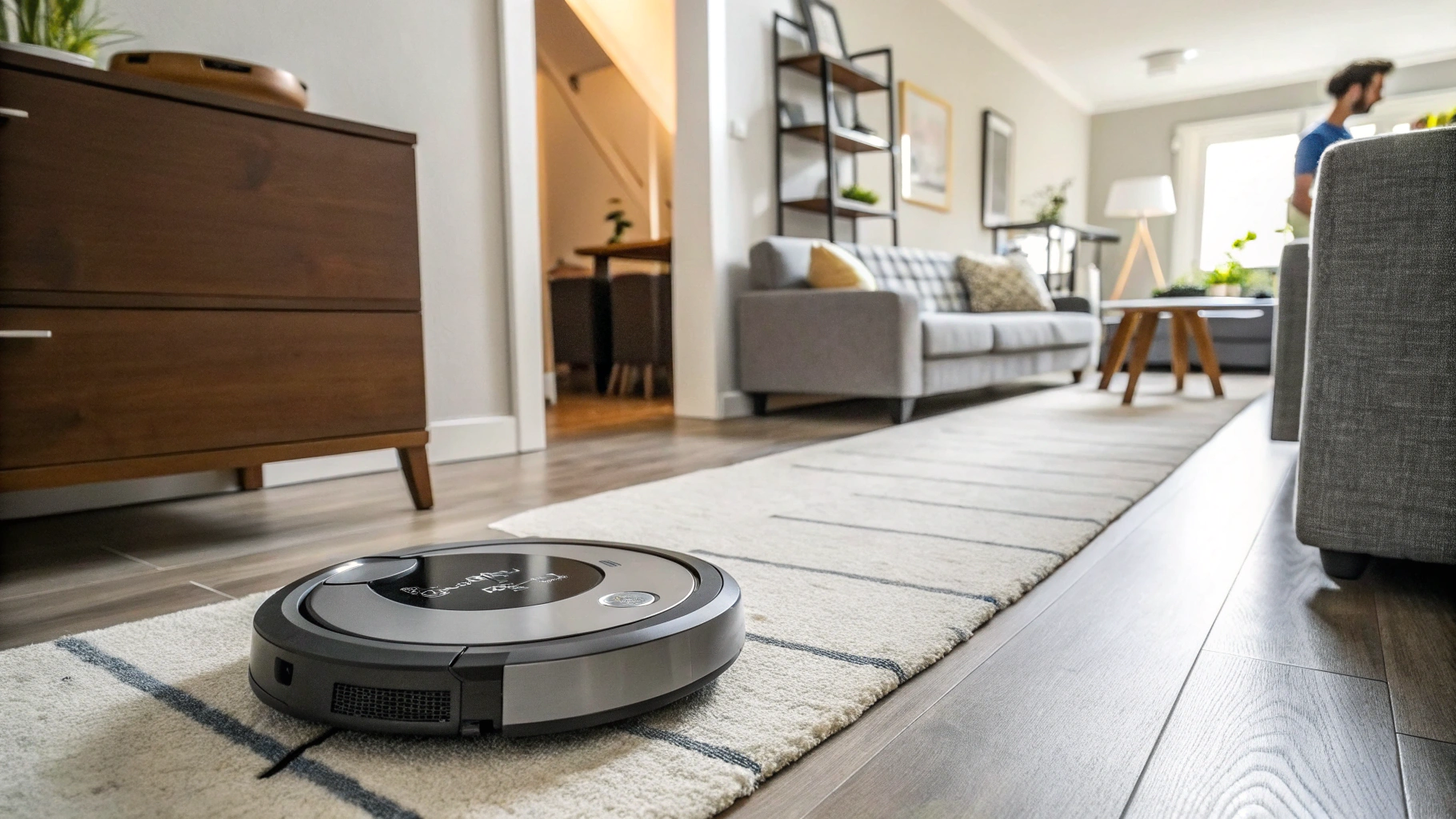
When I first moved into a large home, the thought of cleaning such an expansive space felt overwhelming. I remember looking at all those rooms and feeling daunted by the task ahead of me. That’s when I stumbled upon the incredible world of robot vacuums. With their recent advancements in navigation technology, these little machines have transformed from mere novelties into real game-changers for homeowners like myself who crave efficiency.
Navigating around obstacles and covering vast floor areas isn’t a struggle for today’s robot vacuums anymore. I discovered that picking the right model means considering my home’s layout, flooring type, and how often I clean. This thoughtful approach can significantly ramp up their effectiveness. By embracing these automated cleaning solutions, I’ve been able to reclaim my time, focusing on what truly counts in my life.
If you’re pondering whether robot vacuums are worth it for your big house, I’d suggest you take a closer look at the latest tech innovations in home cleaning. They’re crafted specifically for larger dwellings, delivering impressive cleaning coverage without the hassle. Try these strategies, and you may find, as I did, that keeping your spacious home clean becomes effortless.
Are Robot Vacuums Suitable for Large Houses?

When I first faced the daunting task of maintaining the cleanliness of my sprawling home amidst my hectic lifestyle, I felt overwhelmed and desperately sought a reliable solution. Like many others, I pondered whether robot vacuums could truly handle the vast expanse of large houses. After much trial and error, I discovered some answers that could help others navigating similar challenges. If you’re a homeowner with a large abode or a busy professional struggling with traditional cleaning methods, this exploration is for you.
Navigating the complexities of different flooring types and expansive spaces, I found that robot vacuums have become an integral part of the solution. They tackle challenges like multi-level navigation and can continuously clean through recharge and resume features. High-capacity models specifically designed for large homes offer benefits that extend beyond mere convenience; they deliver transformative efficiency that I never thought possible.
The pivotal question remains: what factors make a robot vacuum suitable for a large house? As someone who has carefully researched this, I’ve identified key technical specifications—like battery life, navigation capabilities, and dust capacity—that are essential for success. In 2025, I discovered the best robot vacuums that can seamlessly tackle the nuances of large living spaces, ensuring every corner is pristine. I hope my insights and experiences guide you towards a choice that transforms your perception of housework.
Choosing the Best Robot Vacuum for Large Homes: Key Considerations
When I first contemplated the challenges of maintaining a large home, the idea of robot vacuums intrigued me. These devices can efficiently navigate multi-level spaces and handle various flooring types. In 2025, I’ve highlighted essential specifications like battery life, navigation capabilities, and dust capacity that make robot vacuums suitable for expansive living areas. Ultimately, a well-chosen robot vacuum can significantly reduce the burden of housework and transform your cleaning regimen.
| Specification | Importance |
|---|---|
| Battery Life | Ensures longer cleaning sessions without frequent recharges. |
| Navigation Capabilities | Allows efficient coverage in multi-level homes. |
| Dust Capacity | Prevents frequent emptying, enhancing cleaning efficiency. |
Key specifications for selecting robot vacuums
When embarking on the quest for an optimal robot vacuum, one must weigh several critical specifications. To commence, suction prowess plays an indispensable role; greater wattage correlates with superior debris extraction across diverse surfaces. Moreover, consider the longevity of battery life; extensive runtimes facilitate uninterrupted cleaning of expansive areas. Intricate navigation systems, particularly laser mapping, should not be overlooked, as they guarantee thorough home coverage. Finally, the value of app connectivity ought to be recognized, permitting remote operation and strategic scheduling. With these pivotal features, your robotic assistant promises to revolutionize your cleaning endeavors.
Benefits of robotic cleaning in spacious homes
In the realm of ample residences, the evolution of robotic cleaning unfolds a tapestry of remarkable benefits. These cutting-edge apparatuses deftly traverse vast spaces, delivering thorough cleanliness without the exertion demanded by conventional techniques. Through astute sensors, they adjust to diverse surfaces, honing their cleaning trajectories. Additionally, the power to schedule functions liberates homeowners from monotonous upkeep. Enhanced by features such as autonomous docking and intelligent dirt detection, these devices elevate both convenience and sanitation. In essence, they represent a harmonious blend of innovation and time-saving efficacy, revolutionizing home maintenance into an effortless endeavor.
Comparative analysis of top models for large houses
In the quest for optimal energy solutions tailored to spacious residences, a thorough comparative study unveils a diverse array of efficiency and sustainability paradigms. The frontrunners, boasting cutting-edge innovations—ranging from seamless solar integrations to sophisticated battery storage—are meticulously designed for expansive environments. Especially remarkable are those systems that harness renewable resources, demonstrating superior cost-effectiveness and minimizing ecological footprints compared to their conventional counterparts. Moreover, their remarkable adaptability to varied climatic scenarios, particularly in regions plagued by extreme weather events, accentuates their enduring utility. Embracing these advanced energy models not only elevates home comfort but also cultivates a more sustainable tomorrow.
How Do Advancements in Robot Vacuum Navigation Improve Efficiency?

When I first encountered the navigation technology of smart robotic vacuum cleaners, it was truly a breath of fresh air. As someone who has witnessed the continuous evolution of smart home devices, I was deeply fascinated by how these small robots are revolutionizing the way we clean through the use of advanced navigation technologies. In the past, robotic vacuums used random cleaning patterns, but now, with the introduction of LiDAR sensors and AI-driven cleaning modes, their efficiency has improved dramatically.
What impressed me most is that the most modern robotic vacuums can build accurate maps of multi-level homes, recognize different rooms, and provide customized cleaning strategies for each area. With the involvement of AI, these devices are able to learn the layout of the home and optimize path planning, thereby maximizing cleaning efficiency while avoiding redundancy and collisions. Obstacle detection and avoidance technologies have also made great strides, evolving from simple sensors to sophisticated AI vision systems, making operation much safer.
If you’re like me and excited about the future of these technologies, I encourage you to explore how these advancements can impact your daily life. Try out different navigation methods and see how they improve your cleaning efficiency—I believe these innovations will bring you unexpected convenience. In the field of smart robotic vacuums, navigation technology is the key to improving cleaning efficiency, and its progress is opening a brand-new door to the future of cleaning.
Revolutionizing Cleaning: The Role of Navigation Technology in Smart Robotic Vacuums
Did you know that modern robotic vacuums employ advanced navigation technology, drastically changing how we clean? With the introduction of LiDAR sensors and AI-powered cleaning modes, these devices can create accurate maps of multi-level homes, customizing cleaning strategies for each room. By learning the layout of a home and optimizing path planning, they maximize cleaning efficiency. Embracing these innovations can significantly enhance your cleaning experience, opening doors to unprecedented convenience in home maintenance.
| Feature | Technology | Benefit |
|---|---|---|
| Navigation | LiDAR Sensors | Precision mapping and room identification |
| AI Learning | Path Optimization | Increased cleaning efficiency and reduced redundancy |
| Obstacle Recognition | AI Vision Systems | Safe operation and collision avoidance |
Impact of LiDAR technology on navigation accuracy
LiDAR technology has fundamentally transformed navigation accuracy in diverse sectors. By generating exceptionally detailed three-dimensional maps, it eclipses conventional methodologies, guaranteeing unmatched precision in terrain representation. This sophisticated data acquisition meticulously captures subtle intricacies, augmenting real-time decision-making prowess. Moreover, when synergized with GNSS frameworks, LiDAR effectively alleviates inaccuracies induced by atmospheric fluctuations. Consequently, fields like autonomous transportation, forest stewardship, and ecological surveillance experience profound advancements, fostering more reliable and efficient navigational systems. Embracing LiDAR catapults us into an era defined by innovation and unparalleled precision.
The role of AI in optimizing cleaning paths
In a world where efficiency is paramount, artificial intelligence metamorphoses the optimization of cleaning routes. By harnessing sophisticated algorithms, AI delves into spatial configurations and environmental factors, allowing cleaning robots to navigate with remarkable accuracy. These astute systems deftly adjust to obstacles in real-time, guaranteeing an exhaustive and expedient cleaning endeavor. As a result, enterprises reap the rewards of superior cleanliness alongside dramatic drops in operational expenditures. Adopting AI isn’t just a choice; it has become imperative for sustaining a competitive edge in our progressively automated landscape.
Advancements in obstacle detection systems
The evolution of obstacle detection systems heralds a transformative era across industries, notably in transportation and robotics. Leveraging intricate sensors and cutting-edge algorithms, these systems attain extraordinary precision in pinpointing potential dangers. The marriage of LiDAR technology with machine learning paves the way for instantaneous data analysis, thereby amplifying safety measures. Moreover, innovations such as 3D imaging bestow an enriched perception of surroundings, prompting rapid decision-making. As sectors advance, the adoption of these technologies is poised to revolutionize operational efficacy while safeguarding pathways for everyone.
What Strategies Maximize Coverage in Larger Homes?

When I first set out to secure insurance for my high-value home, I felt a mix of excitement and dread. The world of luxury home insurance can be daunting; it’s not just about checking a box—it’s a crucial step in safeguarding one of your most significant investments. Particularly if you’re in a region vulnerable to natural disasters, understanding the intricacies of larger home insurance coverage becomes essential.
I quickly learned that the unique features of luxury homes attract specific insurance needs. Standard policies just wouldn’t suffice. For instance, incorporating disaster-resistant materials or making structural enhancements can significantly reduce premium costs while providing peace of mind. This approach harmonizes elegance with function, moving us away from temporary fixes to genuine, long-term protection.
I’m eager to share these insights and strategies with you, focusing on how to tailor your insurance policies to truly reflect the value of your home. With the growing importance of risk management in high-value residences, let’s dive into optimizing your coverage. I hope these tips not only resonate with you but also encourage you to take actionable steps toward enhancing your home’s safety today.
Essential Strategies for Luxury Home Insurance Coverage
Feeling daunted by luxury home insurance is common, yet understanding your unique needs can empower you. Standard policies fall short for high-value homes, where specific features merit specialized coverage. For instance, utilizing disaster-resistant materials not only enhances aesthetics but can also lower premiums. Tailoring your insurance reflects your home’s true value, ensuring long-term protection. Embracing these strategies will help secure your significant investment effectively.
| Key Feature | Benefits |
|---|---|
| Specialized Coverage | Meets unique needs of luxury homes. |
| Disaster-Resistant Materials | Reduces premiums while enhancing safety. |
| Long-Term Protection | Ensures comprehensive coverage for significant investments. |
Understanding unique insurance requirements for luxury homes
Luxury residences exude magnificence, yet they carry specific insurance demands. These majestic homes typically boast custom features—imagine exquisite finishes, sophisticated security systems, and priceless collectibles. Insuring such properties requires meticulous assessments, guaranteeing that coverage matches their distinctive architecture and valuables. Furthermore, homeowners ought to explore supplemental protection against natural calamities, given that elite properties may occupy precarious locations. Grasping these individualized requirements is vital for preserving your investment. Secure your cherished estate with bespoke insurance that truly acknowledges its value.
Benefits of disaster-resistant materials in home insurance
In a time dominated by erratic climatic fluctuations, the infusion of calamity-proof materials into home insurance stands out as an essential strategy for property owners. These specially designed substances, crafted to endure nature’s wrath, amplify the sturdiness of homes. They not only curtail potential damages but, intriguingly, can lead to a substantial reduction in insurance costs over time—a compelling economic motivator. By adopting such progressive measures, homeowners bolster safety while demonstrating a forward-thinking commitment to investment protection. Opt for disaster resilience and fortify your sanctuary today.
Key strategies for optimizing policy coverage for high-value properties
In the prestigious sphere of high-end real estate, fine-tuning policy coverage emerges as an essential strategy. Engaging in extensive risk evaluations enables the customization of safeguards that resonate with the distinct needs of each property. Harness sophisticated analytics to discern and rank likely threats, thus safeguarding competitive yet sufficient insurance premiums. Moreover, routinely revising and adapting policies alongside property upgrades fortifies assets against shifting hazards. Ultimately, an anticipatory dialogue with insurers cultivates transparency and amplifies coverage effectiveness, ensuring robust protection for your premium investments.
How to Choose the Right Robot Vacuum for Your Space?

When I first began the journey of choosing the right robot vacuum for my home, I felt overwhelmed by the options. Living in a small apartment, my goal was to find a device that efficiently navigates tight spaces while offering top-notch cleaning capabilities. It’s a common struggle for many, especially in varied international markets where living conditions differ. I quickly realized that understanding the layout and specific cleaning needs of my space was crucial.
For instance, I discovered how robot vacuums equipped with advanced navigation technology became game-changers for homes with intricate layouts. By comparing features like suction power and smart home integration, I understood how these aspects can significantly enhance my experience. I also delved into self-emptying models, which promised convenience and reduced maintenance efforts—an absolute win for busy lifestyles.
Ultimately, selecting the right robot vacuum means considering multiple factors from size and functionality to your home’s flooring types. After comparing various options and looking at case studies of different living spaces, I finally found the perfect match for my humble abode. I hope my insights help guide you towards choosing your ideal robotic cleaner. Take a moment to assess your living space because the perfect robot vacuum could make cleaning effortless!
Choosing the Best Robot Vacuum for Small Spaces
When navigating the myriad of robot vacuum options, I found that advanced navigation technology was essential for homes with compact layouts. Understanding your specific cleaning needs is paramount, as factors like suction power and smart home integration can profoundly impact performance. Ultimately, the right robot vacuum not only enhances cleaning efficiency but also fits seamlessly into your lifestyle, making chores less daunting and effortless.
| Feature | Importance |
|---|---|
| Advanced Navigation | Essential for tight spaces |
| Suction Power | Improves cleaning effectiveness |
| Smart Home Integration | Enhances user experience |
| Self-Emptying Capability | Reduces maintenance efforts |
| Size and Functionality | Must fit the home layout |
Understanding the importance of layout and cleaning needs
A meticulously crafted layout transcends mere visual appeal; it is integral to optimizing functionality. Recognizing the significance of layout directly correlates with enhanced efficiency and user satisfaction. Moreover, meticulous attention to cleaning necessities becomes paramount in settings where hygiene reigns supreme. A thoughtfully designed space curtails clutter, streamlining maintenance activities. This symbiotic approach not only cultivates an attractive environment but also nurtures a domain ripe for productivity and safety. Elevating both layout and cleanliness is essential for achieving operational excellence across all pursuits.
Comparing features: suction power and navigation technology
When selecting a vacuum cleaner, it is imperative to juxtapose suction prowess with navigation prowess. The potency of suction crucially dictates cleaning effectiveness; a higher wattage often correlates with enhanced dirt extraction across diverse surfaces. On the flip side, sophisticated navigation technology guarantees meticulous coverage, thwarting any overlooked areas while expediting the cleaning process. Smart mapping capabilities, replete with sensors, foster effortless maneuvering amidst chaos. Ultimately, an astute choice that harmonizes these attributes amplifies home hygiene and user gratification, rendering it a judicious investment in efficient cleaning apparatuses.
The benefits of self-emptying models for convenience
In the whirlwind of modern existence, the pursuit of convenience dominates. Enter self-emptying vacuums—an extraordinary breakthrough in domestic cleaning that transforms mundane chores into a breeze. Picture a gadget that intuitively transfers collected debris into a hermetically sealed receptacle, drastically slashing upkeep demands. This cutting-edge paradigm not only conserves precious time but also curbs allergens—essential for those with sensitivities. By opting for a self-emptying model, one amplifies daily efficiency, liberating time for what genuinely matters. Embrace this innovation and unveil a lifestyle steeped in uncomplicated ease.
Conclusion

I vividly recall my early days of academic writing, grappling with the daunting task of crafting a compelling conclusion for my research papers. Summarizing a complex maze of data into a concise, impactful message often felt like an uphill battle. I know many of you can relate to this; a well-written conclusion can truly make or break the perceived value of your work. It took me numerous trials and revisions to realize that a strong conclusion isn’t just a summary—it’s a bridge that connects the promises made in the introduction to the broader significance of the results, amplifying the overall impact of the paper.
In my journey, I’ve learned that successful conclusion writing revolves around crafting a coherent narrative that reflects the introduction while steering clear of the common pitfall of simply repeating results. It’s crucial to look ahead, hinting at future research directions that can enhance the relevance of your work. Across various fields—be it medicine, engineering, or IT—effectively written conclusions can elevate them from an afterthought to a key element that boosts a paper’s citation potential and scholarly impact.
If you’re eager to enhance your conclusion writing skills, I encourage you to try employing these insights in your next academic endeavor. The difference they can make in the clarity and resonance of your final message is truly remarkable.
Mastering Conclusions: The Key to Academic Impact
Reflecting on my early academic writing days, I faced the challenge of crafting compelling conclusions. A strong conclusion is not just a summary—it’s a bridge linking the introduction to the broader significance of results, amplifying the paper’s impact. Well-written conclusions can elevate scholarly work in various fields, enhancing citation potential and contribution to future research directions. By honing your conclusion writing skills, you can significantly improve the clarity of your final message.
| Key Elements | Description |
|---|---|
| Importance | Enhances perceived value of the paper |
| Connection | Links introduction to significance of results |
| Avoiding Pitfalls | Steers clear of merely repeating results |
| Future Research | Hints at directions to enhance relevance |
| Field Application | Applicable across medicine, engineering, IT |
The role of conclusions in academic writing
In scholarly compositions, conclusions emerge as indispensable elements, encapsulating the quintessence of research outcomes. Beyond simple recaps, they incite readers to ponder the broader ramifications of the findings. An effectively crafted conclusion weaves together pivotal insights, solidifying the thesis while acknowledging constraints and proposing potential avenues for future inquiry. This crucial segment stimulates academic dialogue, nurturing ongoing exploration. Ultimately, conclusions act as the denouement that amplifies the narrative’s coherence and significance, underscoring the value of meticulously researched viewpoints.
Strategies for crafting impactful conclusions
When orchestrating compelling conclusions, the implementation of deliberate strategies can elevate their potency remarkably. Begin by interlacing pivotal points into a captivating narrative that strikes a chord with your audience. A well-crafted call to action, urging readers to ponder or partake, intensifies emotional connectivity. Supplement this with provocative inquiries or vivid imagery, ensuring your conclusion lingers in memory. Finally, prioritize lucidity and conciseness to sustain interest. Such techniques metamorphose conclusions into dynamic, persuasive finales that inspire action and etch a profound imprint.
Future research directions and their significance
Gazing ahead, the trajectory of research unravels a tapestry of innovation and sustainability. A pivotal focus centers on renewable energy technologies, especially within the realms of developing regions, constituting a cornerstone for future advancements. This exploration goes beyond mere efficiency to delve into the socio-economic ramifications as well. It becomes crucial for subsequent studies to accentuate the harmony between society and environment, illustrating how sustainable initiatives can uplift local communities. Such revelations are essential for crafting policies that catalyze transformative progress. Consequently, investing in this research transcends mere benefit—it’s an imperative for cultivating resilient societies.

